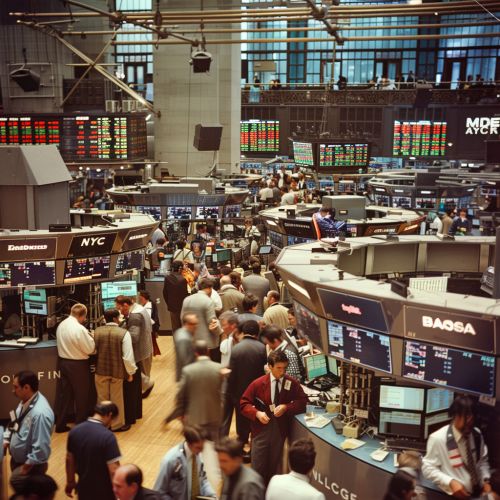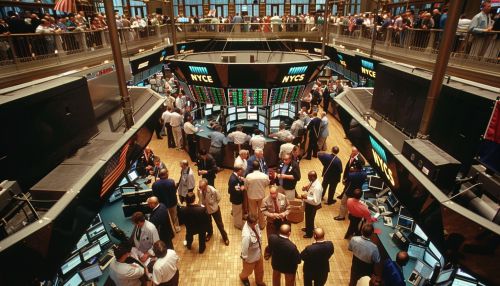Secondary Market
Overview
The secondary market, also referred to as the 'aftermarket', is the financial market where previously issued securities and financial instruments such as stock, bonds, options, and futures are bought and sold. The secondary market is contrasted with the primary market, where new securities are issued and sold to investors directly by the issuer.
Function and Importance
The secondary market serves several key functions in the economy. It provides a platform for the trading of securities, which contributes to the overall liquidity of the market. This liquidity, in turn, makes it easier for individuals and institutions to quickly buy and sell securities, which helps to ensure that investors can easily enter and exit their positions.


Types of Secondary Markets
There are two main types of secondary markets: auction markets and dealer markets.
Auction Markets
In an auction market, all individuals who wish to sell a particular security gather in one place to announce their bid prices and quantities. Buyers also announce their ask prices and quantities. The exchange is made when the bid and ask prices match.
Dealer Markets
In a dealer market, dealers hold inventories of securities and stand ready to buy and sell securities to individuals who wish to trade. The dealers profit from the spread between the price at which they buy securities (the bid price) and the price at which they sell securities (the ask price).
Trading Mechanisms
Trading in the secondary market can be done through various mechanisms, such as over-the-counter (OTC) trading or through a centralized exchange.
Over-the-Counter Trading
Over-the-counter trading involves dealers who negotiate directly with buyers and sellers. OTC trading can take place electronically or over the phone. The OTC market is less regulated than centralized exchanges and can involve a wider range of securities.
Centralized Exchange Trading
Trading on a centralized exchange, such as the New York Stock Exchange (NYSE) or the NASDAQ, involves a physical location where all trades are conducted. Centralized exchanges are highly regulated and have specific listing requirements for securities to be traded.
Regulation
The secondary market is heavily regulated to protect investors and maintain the integrity of the market. In the United States, the Securities and Exchange Commission (SEC) is the main regulatory body for the secondary market. The SEC enforces rules regarding disclosure, fair dealing, and fraud prevention.
Risks and Considerations
While the secondary market provides many benefits, it also comes with certain risks. These include market risk, where the value of securities can fluctuate due to changes in the overall market, and liquidity risk, where a security may not be easily tradable due to a lack of buyers or sellers.
